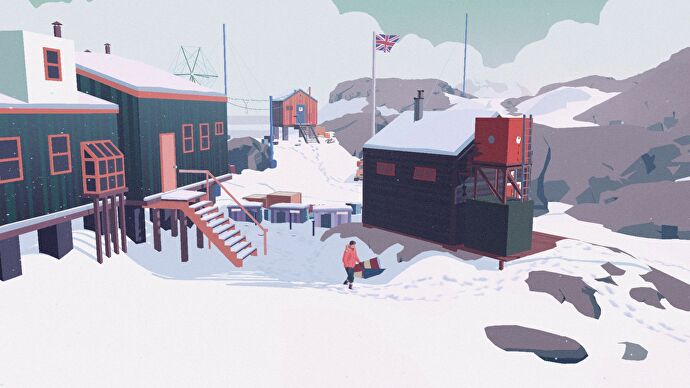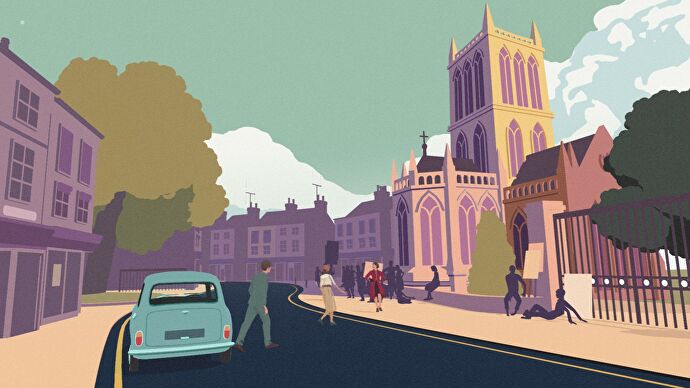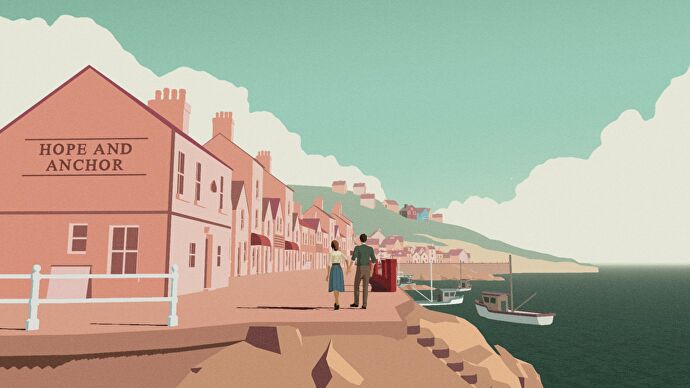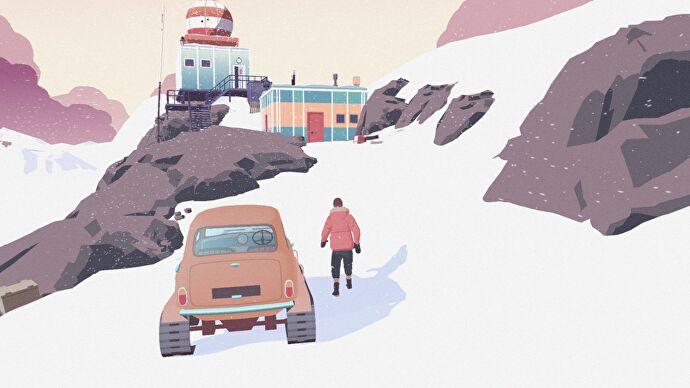South Of The Circle review: a Cold War story with emotional highs that fumbles the landing

Peter is a guy with his head in the clouds. Literally. Well, sort of. A climate science lecturer at Cambridge University, Peter’s great passion in life is cloud research. All he wants to do is study clouds: their different formations, their flight paths, their properties, everything. He can’t get enough of them, and finds them fascinating enough to be the subject of his 100-page PhD thesis. It’s a poetic subject and one that matches his temperament as a boyish and awkward researcher and ‘path of least resistance’ kinda guy. But around him the world is spiraling from the political tensions of the Cold War, and as much as Peter wishes to escape to in the clouds, current events are keeping him firmly tethered to the realities of an impending war.
It’s this tension that makes South Of The Circle such an engrossing story. With player choices that subtly tug the game’s narrative needle in ways you might not expect, it’s clear skies and fair winds for the game’s three-hour journey. But with an abrupt ending after a calculated slow-burn drama, it’s a rough landing.
When we first meet Peter he’s not in a good way. He’s sitting in the passenger seat next to an unconscious pilot in a plane that’s just crashed in the middle of an icy tundra in Antarctica. With the plane completely out of action and the pilot’s leg broken, Peter needs to leave the safety of the aircraft and walk through the wind-chilled snow to find help. The frost-bitten winds of Antarctica are far from a Cambridge academic’s natural habitat (an office stacked with piles of paper, towers of books, and empty cups of tea comes to mind) so the game switches between Peter’s present and past, showing us exactly how he got into this dangerous situation and how he’ll escape.
This intercutting between past and present is one of the best elements of the game. One moment you’ll be guiding Peter through an icy storm, only for a particularly thick gust of wind to wipe away the tundra and suddenly you’re guiding Peter through a picturesque train station in sunny Cambridge. Peter might knock on a door to an Antarctic outpost, but as he walks through it the scene match cuts to him entering his professor’s office. Each time you’re bounced back and forth, there’s always a transition. It’s a great way of joining past to present and makes everything very visually slick.
There are also times when you’ll be exploring environments, picking stuff up, messing with radio signals, and poking around. They’re few are far between, but together with the South Of The Circle’s colorful and minimalist art style making every scene look like the gorgeous WPA travel posters of the 1930sthe creative direction is top notch.

Throughout Peter’s life, both in the present and in the past, you’re given a number of small but life-altering decisions to make in conversations with characters. Developers State Of Play have not gone for your usual conversational system, and instead of dialogue options South Of The Circle presents a number of emotional responses that you can pick to decide Peter’s reaction. These appear as little QTE bubbles above Peter’s, head meaning you’ll need to decide quickly how you want Peter to respond in certain situations. If you don’t choose an option in time, the game will pick one for you and move right along, which feels like you’re playing an interactive movie rather than a branching narrative story.
Instead of deciding the direction of the game, it feels more like you’re fleshing out a sort-of personality profile
There’s clearly a single storyline the game wants to tell, and your choices don’t do much in dictating that. It’s frustrating at first, but the thematic weight behind the choices makes them infinitely more interesting. Instead of deciding the direction of the game, it feels more like you’re fleshing out a sort-of personality profile for Peter, and this ties in neatly with how South Of The Circle engages with its themes of toxic masculinity and sexism.
After growing up in 60s Britain with an aggressive father, and his fellow male academics poking fun at his interest in weather patterns in his adult life (the dude likes clouds, leave him be. Yeesh), we see Peter constantly having to grapple with his Masculinity on a personal and societal level. In this way, it’s interesting that South Of The Circle encourages you to interact with and embrace Peter’s feelings in a time where, socially, men’s emotions were incredibly reppressed (echoes which are, of course, still prevalent today).




I really appreciated this aspect of the story, and it’s one that extends to Peter’s friend and eventual love interest, Clara. A young woman working as a fellow researcher at Cambridge, Clara faces many institutional sexist bigotries, and there’s a sense of companionship between the two as they both share the dream of escaping to the clouds.
This is all underpinned by a looming sense of Cold War paranoia, a time when accusations of being a soviet spy were flying around thick and fast. It all accumulates in a slow-burn drama that builds and builds until the very end. Where your choices might make a difference in other narrative games, however, in South Of The Circle they fizzle into nothing, and instead of a satisfying conclusion it cuts everything short, which left me feeling incredibly underwhelmed.
Even if the game’s final moments lacked the emotional wallop, South Of The Circle’s story, presentation, and visual direction hit every mark for me with the biggest surprise being the nuance and the way it handled its themes. It’s a shame about the ending – but it’s about the journey, not the destination, right?
Reference-www.rockpapershotgun.com